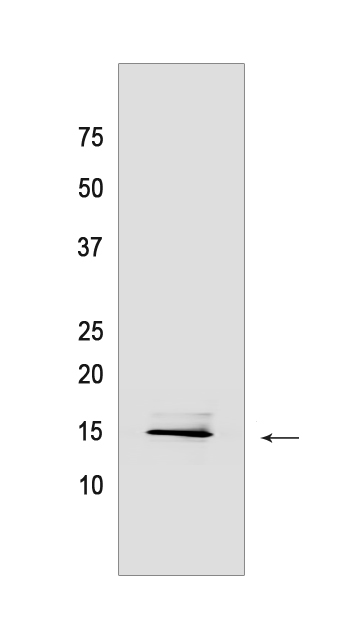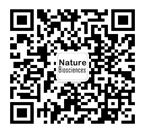PLA2G2A Rabbit mAb[04DO]Cat NO.: A39990
Western blot(SDS PAGE) analysis of extracts from Mouse spleen tissue lysate.Using PLA2G2A Rabbit mAb IgG [04DO] at dilution of 1:1000 incubated at 4℃ over night.
Product information
Protein names :PLA2G2A,PLA2B,PLA2L,RASF-A,PA2GA_HUMAN,Phospholipase A2, membrane associated
UniProtID :P14555
MASS(da) :16,083
MW(kDa) :14kDa
Form :Liquid
Purification :Protein A purification
Host :Rabbit
Isotype :IgG
sensitivity :Endogenous
Reactivity :Human,Mouse,Rat
- ApplicationDilution
- 免疫印迹(WB)1:1000-2000
- The optimal dilutions should be determined by the end user
Specificity :Antibody is produced by immunizing animals with a synthetic peptide of human PLA2G2A.
Storage :Antibody store in 10 mM PBS, 0.5mg/ml BSA, 50% glycerol. Shipped at 4°C. Store at-20°C or -80°C. Products are valid for one natural year of receipt.Avoid repeated freeze / thaw cycles.
WB Positive detected :Mouse spleen tissue lysate
Function : Secretory calcium-dependent phospholipase A2 that primarily targets extracellular phospholipids with implications in host antimicrobial defense, inflammatory response and tissue regeneration (PubMed:10455175, PubMed:10681567, PubMed:2925633). Hydrolyzes the ester bond of the fatty acyl group attached at sn-2 position of phospholipids (phospholipase A2 activity) with preference for phosphatidylethanolamines and phosphatidylglycerols over phosphatidylcholines (PubMed:10455175, PubMed:10681567). Contributes to lipid remodeling of cellular membranes and generation of lipid mediators involved in pathogen clearance. Displays bactericidal activity against Gram-positive bacteria by directly hydrolyzing phospholipids of the bacterial membrane (PubMed:11694541, PubMed:10358193). Upon sterile inflammation, targets membrane phospholipids of extracellular mitochondria released from activated platelets, generating free unsaturated fatty acids such as arachidonate that is used by neighboring leukocytes to synthesize inflammatory eicosanoids such as leukotrienes. Simultaneously, by compromising mitochondrial membrane integrity, promotes the release in circulation of potent damage-associated molecular pattern molecules that activate the innate immune response (PubMed:25082876). Plays a stem cell regulator role in the intestinal crypt. Within intracellular compartment mediates Paneth cell differentiation and its stem cell supporting functions by inhibiting Wnt signaling pathway in intestinal stem cell (ICS). Secreted in the intestinal lumen upon inflammation, acts in an autocrine way and promotes prostaglandin E2 synthesis that stimulates Wnt signaling pathway in ICS cells and tissue regeneration (By similarity). May play a role in the biosynthesis of N-acyl ethanolamines that regulate energy metabolism and inflammation. Hydrolyzes N-acyl phosphatidylethanolamines to N-acyl lysophosphatidylethanolamines, which are further cleaved by a lysophospholipase D to release N-acyl ethanolamines (PubMed:14998370). Independent of its catalytic activity, acts as a ligand for integrins (PubMed:18635536, PubMed:25398877). Binds to and activates integrins ITGAV:ITGB3, ITGA4:ITGB1 and ITGA5:ITGB1 (PubMed:18635536, PubMed:25398877). Binds to a site (site 2) which is distinct from the classical ligand-binding site (site 1) and induces integrin conformational changes and enhanced ligand binding to site 1 (PubMed:25398877). Induces cell proliferation in an integrin-dependent manner (PubMed:18635536)..
Tissue specificity :Expressed in various tissues including heart, kidney, liver, lung, pancreas, placenta, skeletal muscle, prostate, ovary, colon and small intestine. Not detected in lymphoid organs and brain (PubMed:10455175, PubMed:10681567). Expressed in platelets (at protein level) (PubMed:25082876)..
Subcellular locationi :Secreted. Cell membrane,Peripheral membrane protein. Mitochondrion outer membrane,Peripheral membrane protein.
IMPORTANT: For western blots, incubate membrane with diluted primary antibody in 1% w/v BSA, 1X TBST at 4°C overnight.


